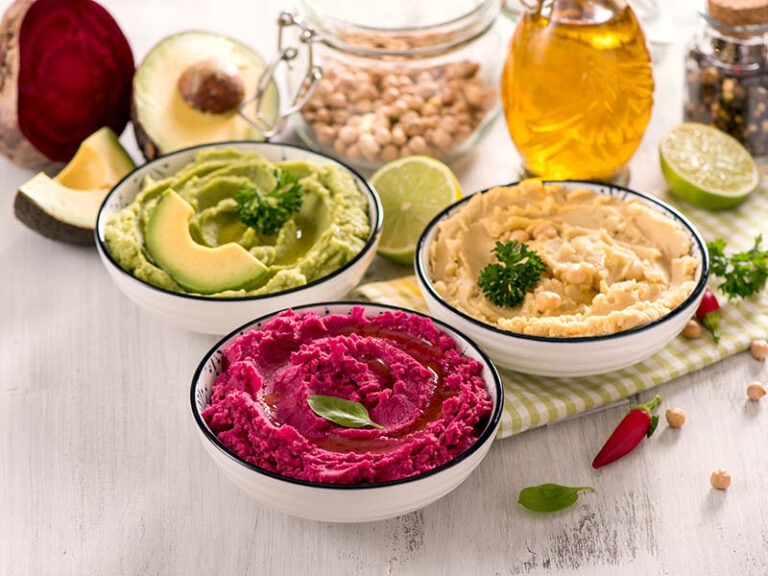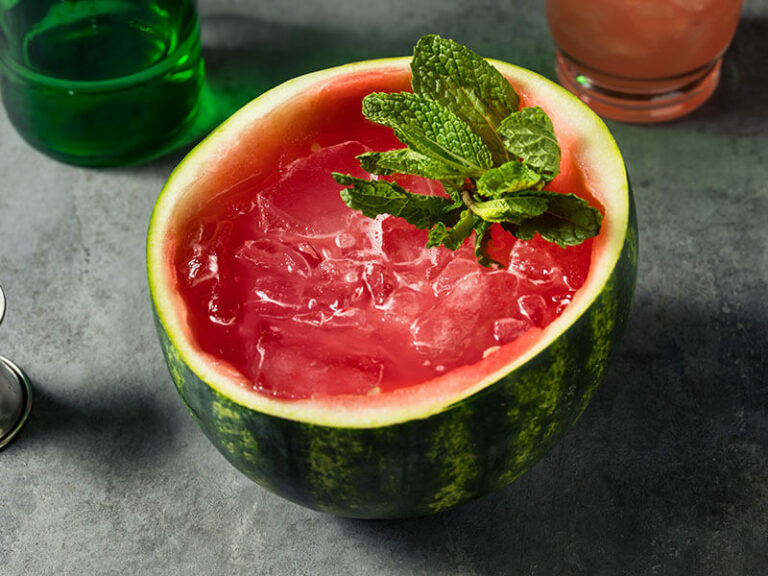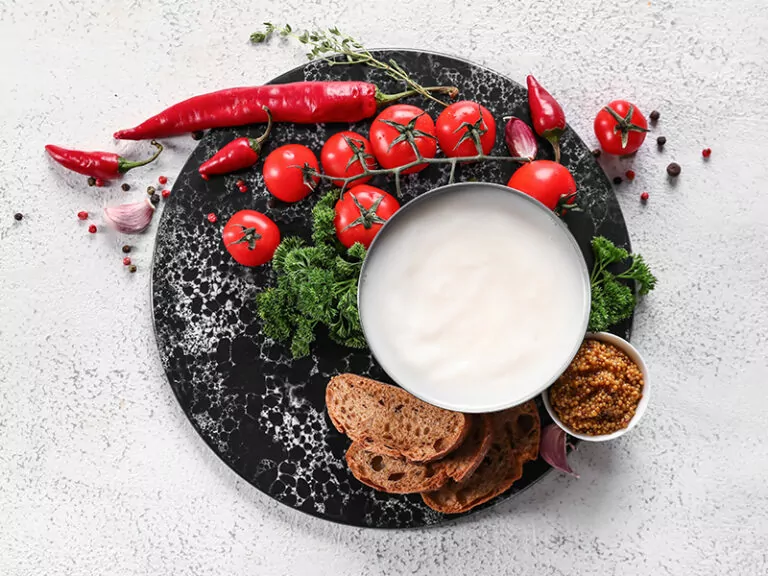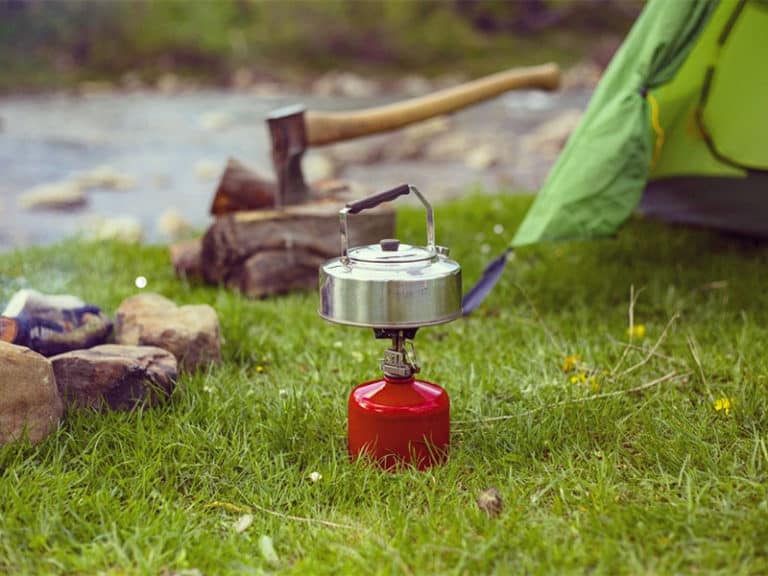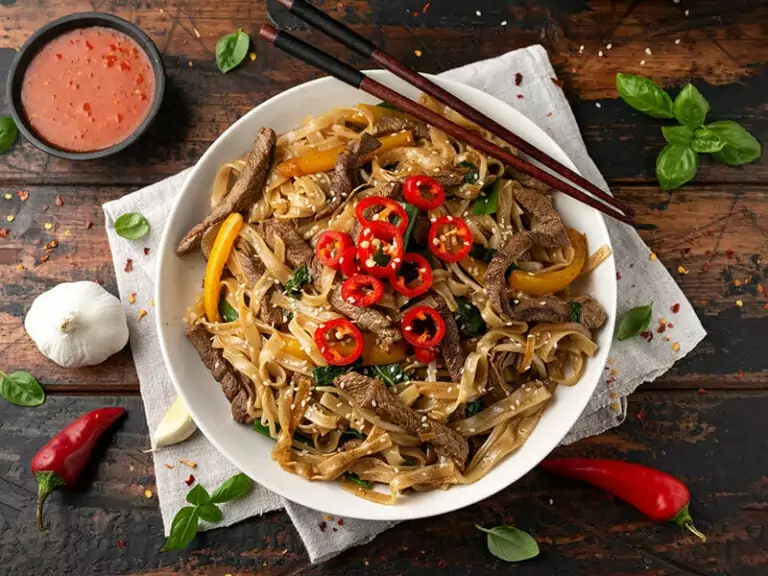What does tobiko taste like? Have you had tobiko before? If you are a fan of Japanese cuisine, I assume you know what tobiko is. But as you have never had Japanese food or tobiko before, its flavor will be a complicated concept for you.
You may resist eating things you don’t know, but skipping tobiko is a loss for people who love good food. Tobiko is healthy, affordable, and delicious. In this post, I will explain the nature of tobiko, its benefits, its taste, and how you can cook tobiko at home.
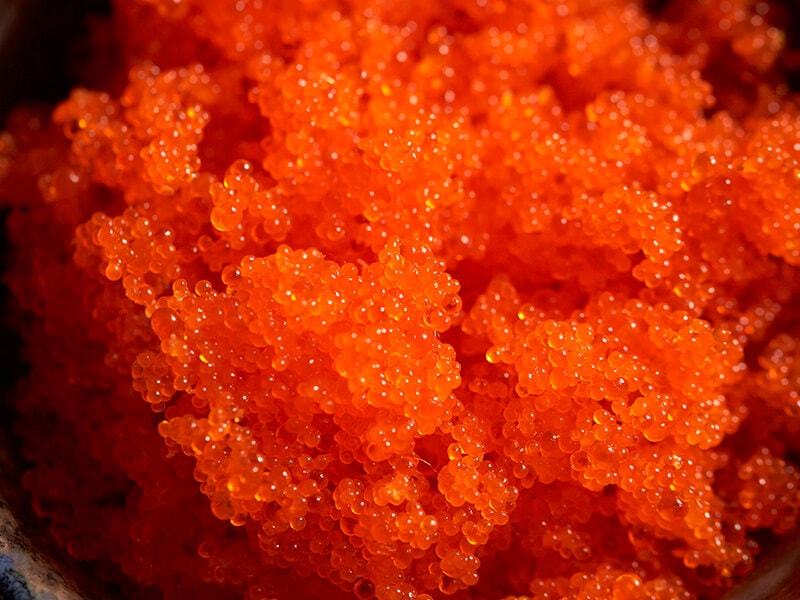
What Is Tobiko?
Tobiko refers to a type of fish roe derived from Japanese flying fish. It is tiny (0.5 to 0.8 mm in size) and has a pearl-like appearance (1). This fish egg usually has a yellowish-orange color, but its hue might change after being dyed with natural coloring ingredients.
It will become green when paired with wasabi and yellow when mixed with citrus fruits like yuzu. Black is also a tobiko color as the chefs combine it with squid ink. And red tobiko happens when people add beet juice or chili peppers.
Tobiko is a Japanese delicacy typically found in sushi and sashimi meals. This popular dish is what every sushi fan must try at least once. Still, you can also use tobiko in other meals.
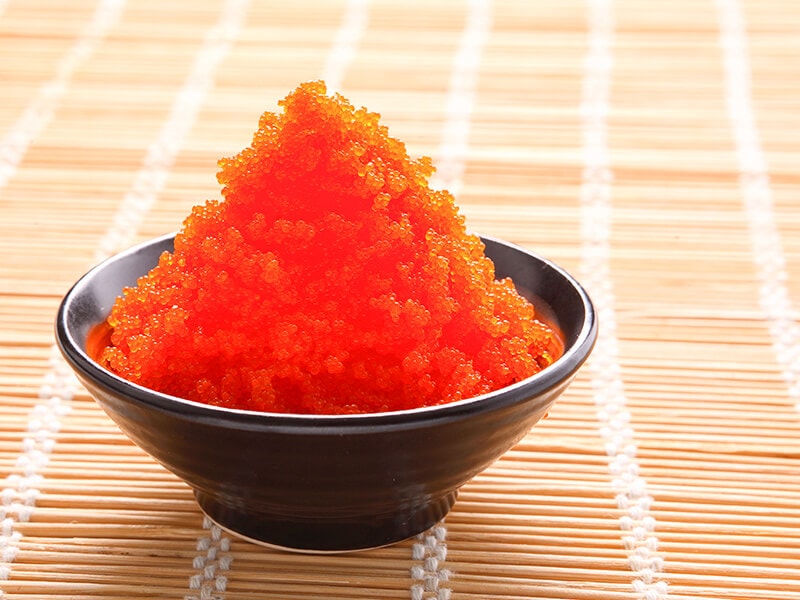
What Does Tobiko Taste Like?
Tobiko has a distinct taste profile that is smokey, salty, and sweet, with some tartness evocative of orange peel. It is mild enough to complement saltier components. That is an important feature distinguishing it from caviar and masago.
Tobiko has a unique crunchy texture that breaks apart crisply on your tongue, releasing a rich flavor. This kind of fish roe can be dyed with various natural colors to create aesthetically appealing food.
Its wonderful blend of savory taste and tongue-pleasing texture makes it a must-have ingredient for sushi, offering a plethora and delectable dishes to try.
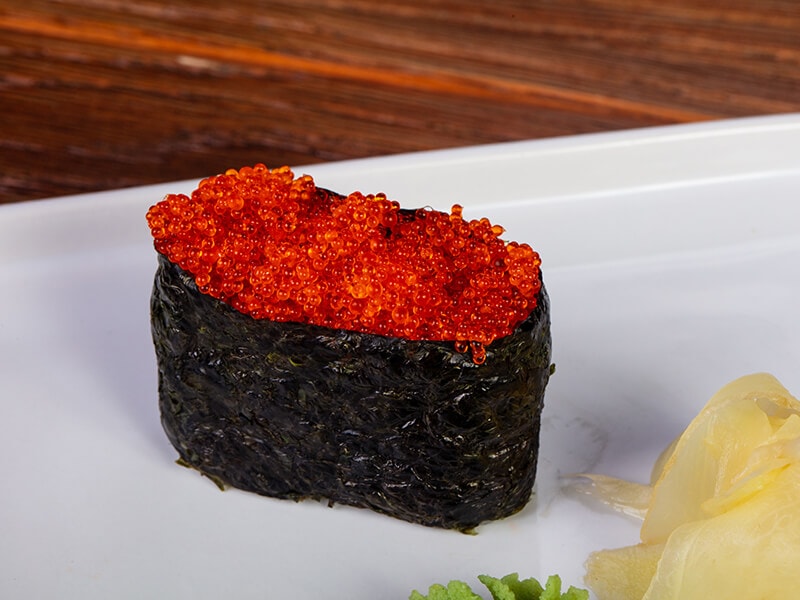
The Health Benefits Of Tobiko
Tobiko is not only a tasty and appealing meal, but it is also good for your health. It has a lot of protein, vitamins, and fatty acids, among other things. Tobiko also contains high calories.
It contains vitamins C, E, and B2. You can say tobiko is a great source of fat. The lipids in tobiko are excellent for lowering inflammation and liver or heart function (2).
The high content of vitamins A and D in tobiko can improve your eyes and skin condition. When you consume it regularly, astaxanthin, a potent antioxidant in tobiko, can enhance your skin condition and reduce wrinkles.
Besides, phospholipid in tobiko is known to aid in cognitive function improvement. However, it has a high cholesterol level. Therefore, you should enjoy the fish roe in moderation.
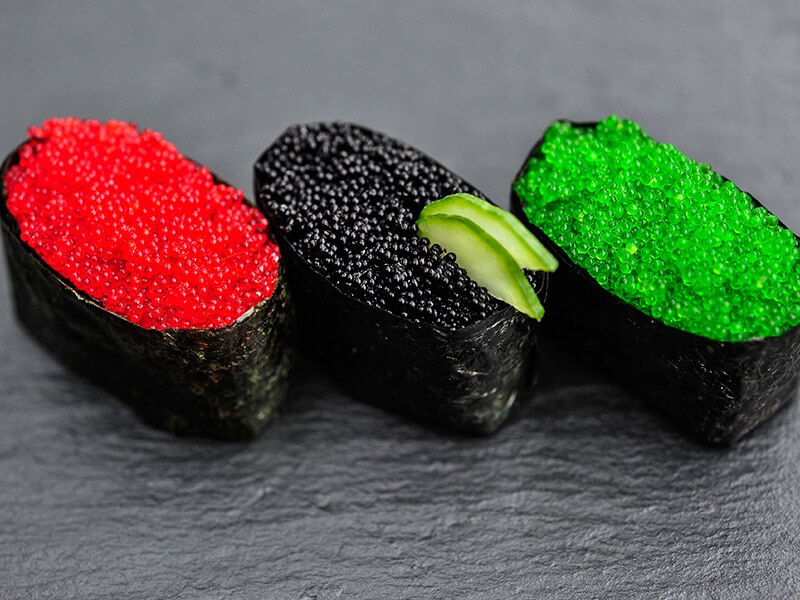
Tobiko And Its Colorful Variants
Tobiko comes in various flavors and colors, including black, golden, red, white, or even green. All varieties have a salty, creamy taste. They may range in size from little grains to big pearls.
Red Tobiko
The red type tobiko is a popular and commonly used type. Its brilliant color makes it ideal for sushi because it provides a vivid contrast to ingredients like whitefish or shrimp.
Furthermore, it is often sprinkled on top of meals such as avocado rolls, nigiri sushi, or salads to give them a colorful appearance and a distinct taste. The hue of red tobiko comes from the combination of fish eggs, salt, and, usually, some beet juice.
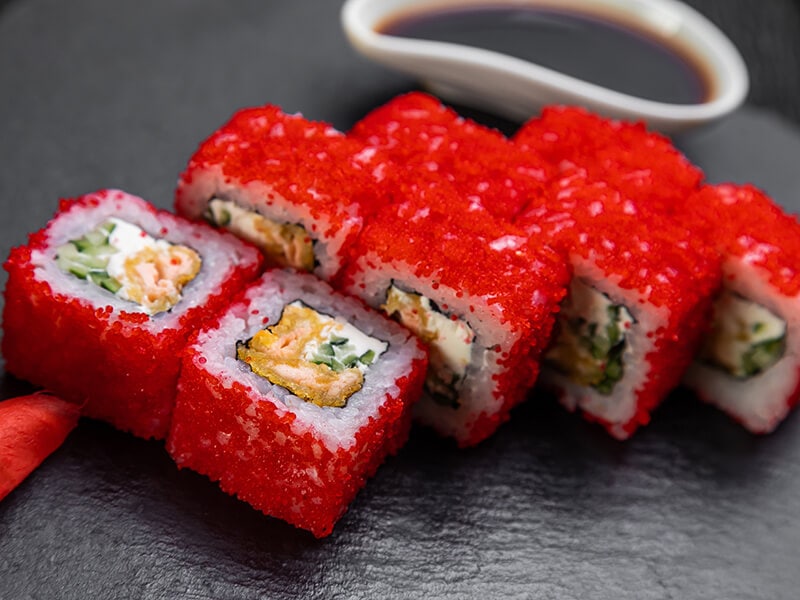
Orange Tobiko
You should use this unique tobiko when cooking Japanese omelets, also known as “tamagoyaki”. In addition, people often use orange tobiko as a topping for various hors d’oeuvres, such as California rolls, spaghetti, or fried rice.
It takes the place of red tobiko and imparts an orange tint to the rolls. The orange color of this tobiko normally comes from a mix of yuzu and tobiko.
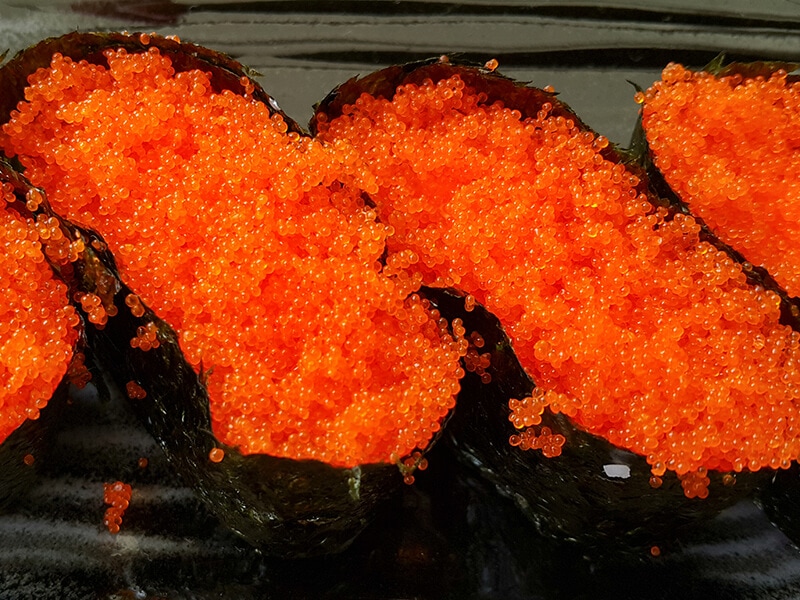
Black Tobiko
This variety looks like caviar, and it tastes like one, too. The opaque look of black tobiko is caused by curing with several substances, including squid ink food coloring.
Black tobiko tastes comparable to other commercial versions but with more umami and an octopus flavor, which comes from the squid ink. It also might have a faint nutty and bitter flavor.
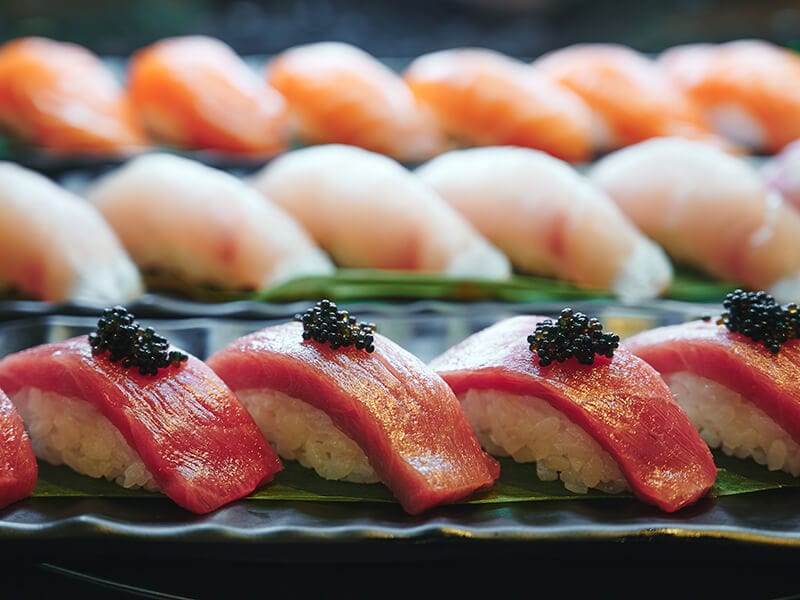
Green Tobiko
Green tobiko, commonly known as wasabi tobiko, is a flying fish roe with a spicy taste due to the inclusion of wasabi extract. People with a penchant for spicy food should go for it.
Golden Tobiko
Golden tobiko refers to fresh, high-quality tobiko. It is usually salted and has a milder taste than many commercially available types.
Usually, this type of tobiko is natural, which means it doesn’t have any food color within. However, in several rare circumstances, food coloring may be applied to improve the golden tobiko’s look.
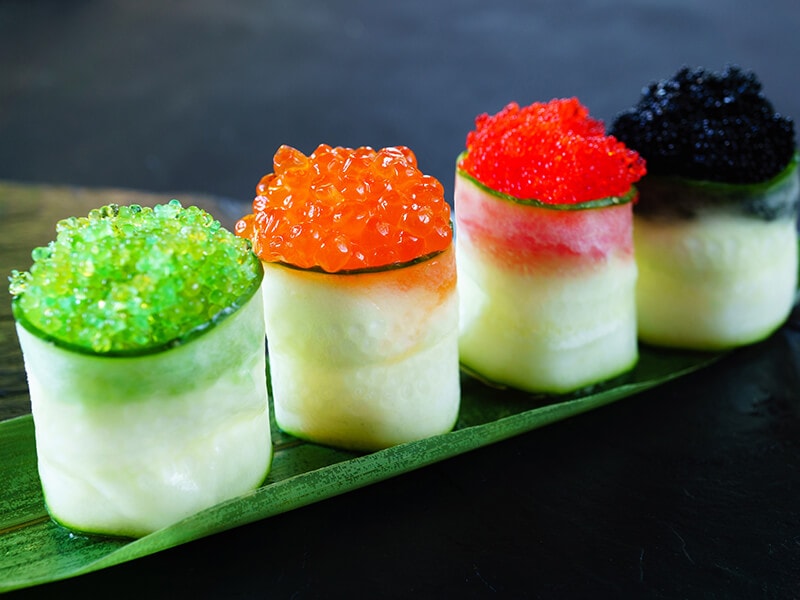
The Best Ways To Serve Tobiko
Tobiko’s salty flavor and firm texture make it a great addition to many Japanese dishes. Whether frozen, thawed, or cooked into sauces, tobiko can add a delicious taste and pop of color to your meal. Here are some ways to use this fish roe in your cooking!
Sushi
The most common match for tobiko is sushi. You can mix it with any sushi ingredient you fancy according to your appetite.
Gunkanmaki
Gunkanmaki is a type of sushi roll. It consists of an oval ball of rice surrounded by a sheet of nori (dried edible seaweed) and occasionally topped with tobiko. You can also put cucumber inside the seaweed sheet to enhance flavor and texture.
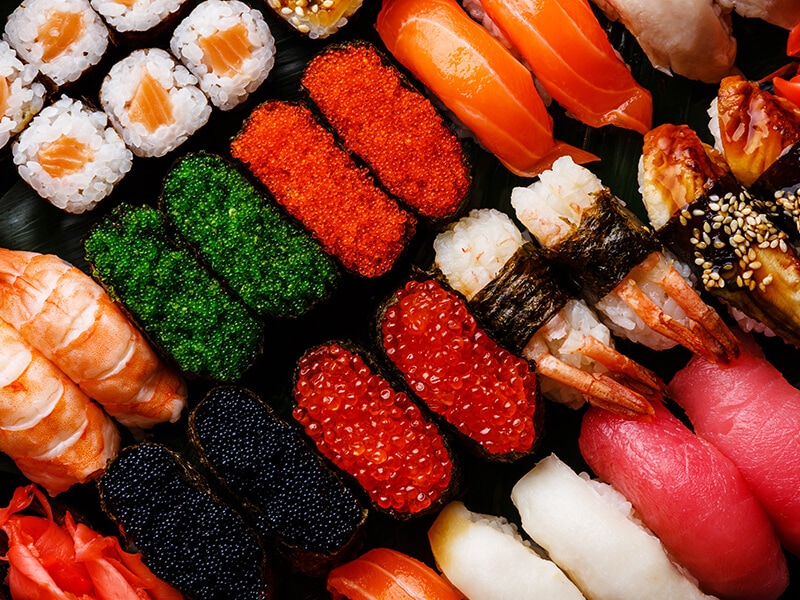
Nigiri
Tobiko nigiri is Japanese sushi in the form of small vinegar-soaked, tobiko-covered rice balls. Japanese chefs usually blend orange tobiko with wasabi to create a spicy bite. Besides, the chef sometimes serves it with soy sauce and pickled ginger.
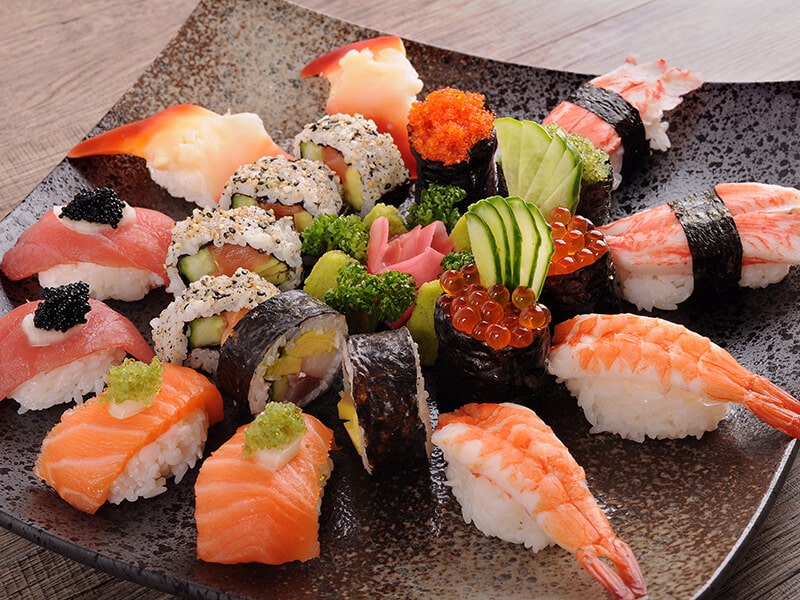
Sushi Rolls
People often use tobiko as a topping for sushi, particularly in California rolls. It imparts a vibrant, colorful appearance with a crisp and satisfying texture to the sushi. You can spread it over the rice to produce a visually striking appearance.
Tobiko-combined California rolls are always the perfect match.
Garnish
Besides sushi, many people use it as a garnish for savory seafood meals. The flying fish roe is a delicious condiment that you can use with a lot of different recipes.
Appetizers
Tobiko is an excellent appetizer to start a meal. Serve it on crackers without any seasoning, toast triangles without any crust, or blinis (Russian pancakes) for an exceptional hors d’oeuvre. Any of these options would be excellent.
Sauces
The addition of flying fish roe to soups, sauces, and dressings is an excellent method to impart a flavor that is crunchy and salty at the same time. Since the roe can maintain its form and consistency in liquid-based food, it will not be softened in soups or sauces.
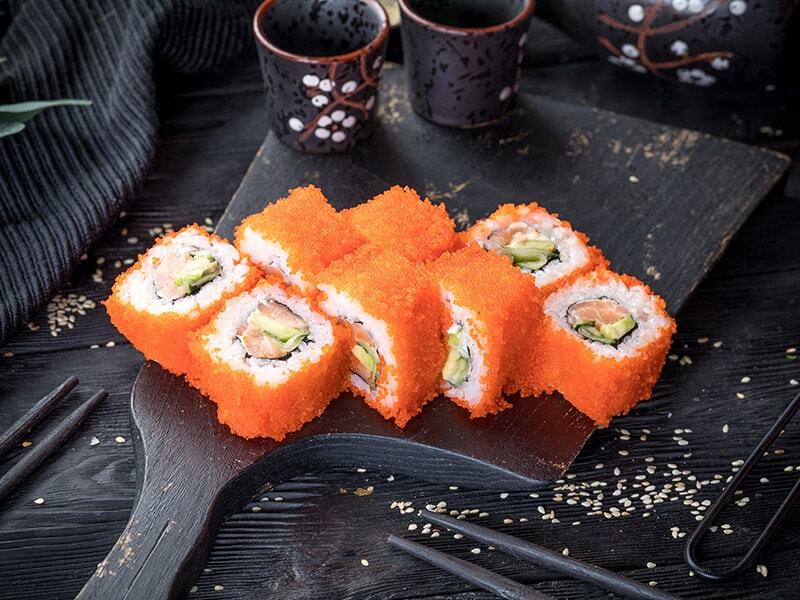
Helpful Tips For Buying And Storing Tobiko
Tobiko is a delicacy enjoyed by many people, but it can be tricky to buy and store correctly. I will provide helpful tips to deal with this matter so that you can enjoy this tasty treat.
Where Can You Find Good Tobiko?
Tobiko is a popular ingredient in sushi dishes. If you’re looking for some good tobiko, you can find it in most Asian grocery stores. You can also find it online, where you can get a wide variety of flavors, ranging from traditional Japanese to spicy or sweet varieties.
Tobiko can also be found in some specialty sushi restaurants, which often offer high-quality, fresh roe. Regardless of where you get your tobiko, you may always check the expiration date to ensure you get the best quality product.
How To Lengthen Your Tobiko’s Shelf Life?
First thing first: you must either freeze or refrigerate the fish roes, at least below 37°F (3°C). You can store an unopened can of tobiko for up to 6 months in the freezer.
However, you should use it within two or three days after thawing. If refrigerated, unopened tobiko can last 4 to 6 weeks.
However, after you open it, you should eat that tobiko within 2 or 3 days. After all, tobiko is particularly fatty and highly perishable. The best storage conditions require airtight or sealed containers.
If you want to rinse tobiko, you may use warm water. It eliminates grease and keeps tobiko’s taste. You should avoid washing it in cold water, as this might take away the flavor.
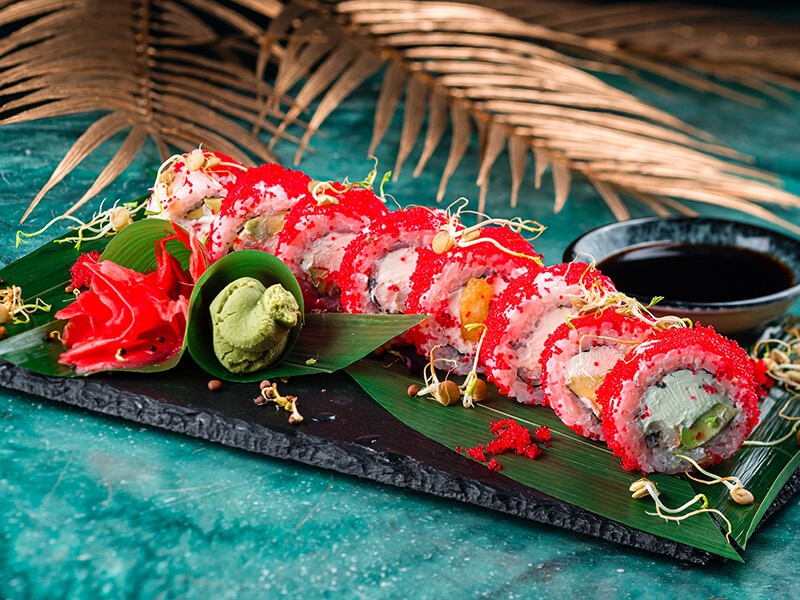
A Comparison Of Tobiko, Caviar, And Masago
Besides tobiko, there are many other types of fish eggs. In this section, I’ll compare tobiko with caviar and masago, which are toothsome delicacies you should try.
Caviar
Caviar is the salted roe of sturgeons such as beluga, kaluga, and sevruga. It is small as a pea and has a shiny sheen. Meanwhile, most tobiko has a diameter of less than 1 millimeter.
The hue of caviar varies from brown to amber and jet black, which is contrary to the brilliant colors of tobiko.
Caviar has a deeply nutty richness tinged with some mildly sweet and salty notes. Some people claim that tobiko has a similar taste profile to caviar. However, tobiko has a smoky note in its flavor.
You can think of caviar as a premium culinary ingredient. Many frequently link caviar with fine dining. Unfortunately, authentic caviar is extremely costly because of its rarity and overfishing. Of course, tobiko is more affordable than this premium delicacy.
In terms of applications, caviar is rather limited. People serve caviar alone or use it as a garnish. This is understandable as sturgeon roes are a highly coveted food and deserve to shine on their own.
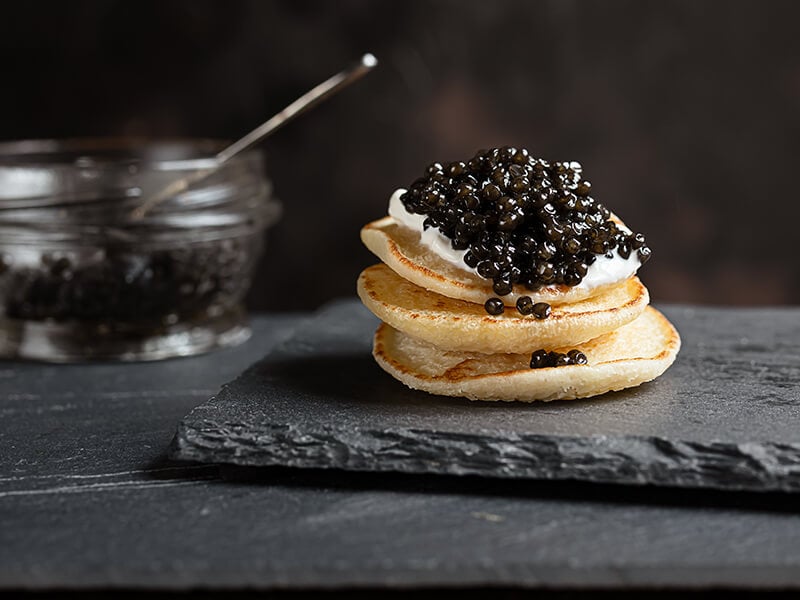
Masago
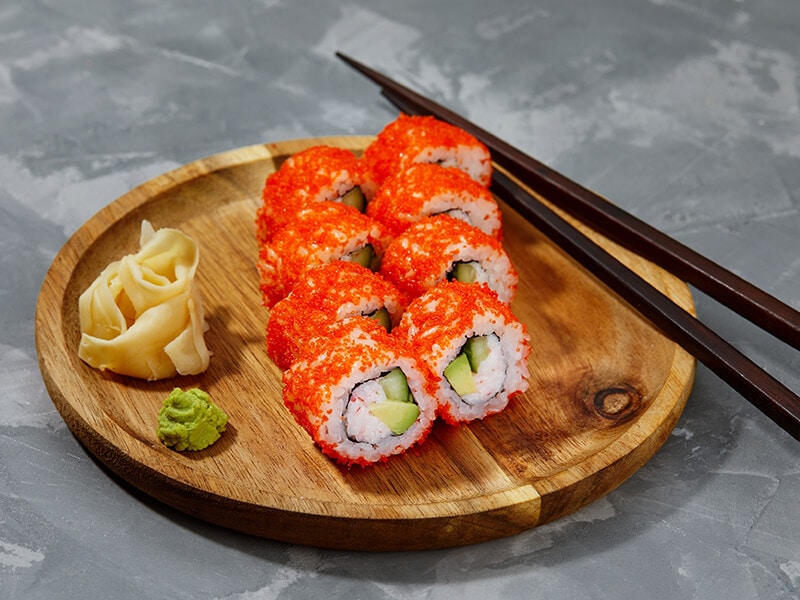
Masago is capelin fish roe, which belongs to the smelt species. Though masago has a vivid orange-red hue, like that of tobiko, its natural color is a little duller. Meanwhile, its texture is more sandy than crisp.
Some manufacturers color the masago to look like tobiko, although the roes are significantly smaller. Masago has a rich and salty taste comparable to tobiko, but it can be a little more bitter.
Many restaurants use masago as a garnish since it is a less expensive alternative to caviar and tobiko. You can use it in different Japanese dishes, particularly in sushi rolls and various rice recipes.
Do you know what masago is? You will know the answer right now!
The Best Recipes You Can Prepare With Tobiko
Tobiko is a great ingredient that you should try once in your life. Tobiko is not only easy to cook but also diverse in recipes. You may learn these recipes to amaze your friends and family on special occasions.
Spicy Kani Salad
You can make this delectable crab salad by combining cucumber with imitation crab, a dressing made of mayonnaise, sriracha, and a touch of mirin or rice vinegar.
Then you may mix all of these ingredients to create an extraordinary taste that will make you wish there were more of it.
If you are a salad fan, you cannot skip this delightful Kani salad! Rush in the kitchen now!
Inari Tobiko Sushi Roll
You can prepare this delicious dish in only 30 minutes. It consists of fried tofu pockets with sushi rice and tobiko mayonnaise on top. Green onions are an excellent garnish for this recipe. This homemade delight is a fantastic option for supper, lunch, or even as an appetizer.
Bacon Kimchi Fried Rice And Tobiko
I strongly recommend using fish roe in this dish since it adds a crisp texture and a delicate sweetness. Soft-boiled onsen eggs provide even more flavor to the fried rice. Whatever ingredients you choose, I guarantee kimchi fried rice is always delicious.
FAQs
Tobiko provides valuable nutrients. It is also delicious. However, there are some things that you need to know about tobiko. Check these questions people frequently ask below!
Do You Think Tobiko Is Great?
Do you want to try some tobiko right now? Tobiko is a wonderful ingredient that will add more amazing flavor to your daily meals. It also provides you with numerous nutrients.
Whether you are into Japanese food or not, eating tobiko is still an interesting experience that you should have. Is tobiko the same as you expected? Let’s leave your thoughts in the comment section so that I can know about your perspectives.
Besides, why don’t you share and like this article so it can reach more people? Maybe there is someone out there who also needs to know this information like you.
References
- Tobiko (2022) Wikipedia. Wikimedia Foundation.
- Health benefits and processing of lipid-based nutritionals (2001) IFT.org.

